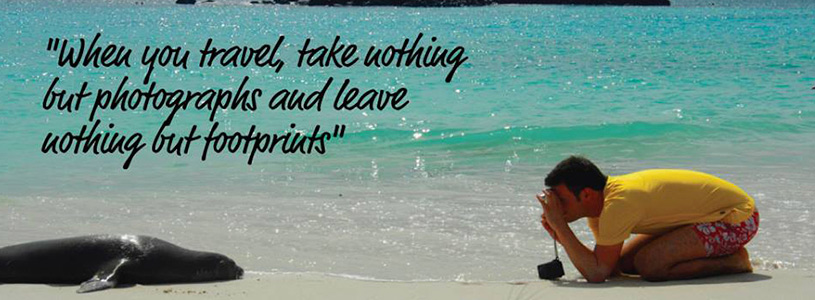
Breathtaking volcanoes, white sand beaches, exotic species…, the ecuadorian Archipelago is one of the favourite destinations of the world, a land of natural wonders, a perfect scenario for relaxing and disconnecting. Visitors that come to Galapagos have the chance to know a incredibly rich nature. Travelers can enjoy the marvelous sights of the coasts and the species, a perfect scenario for biologists and photographers. Unfortunately, Galapagos Islands are endangered and need special protection.
The Archipelago is in risk for many reasons. Some foreign species have been introduced, such as feral goats, cats, cattle and also many plants, this has resulted in the loss of part of the habitat. Another problem is the delivery of some agents of infection. Some of the natural jewels of these wonderful islands are endangered: a great part of the fauna of Galapagos Islands need special protection. 80% of the birds, 97% of the mammals and reptiles and 30% of the plants are endangered.
Luckily, in the last past years, the environmental awareness has been growing, and there are measures to protect the ecosystem. Tourism in essential for Galapagos, as it contributes to the economy of the islands. For example, the fees for the Galapagos National Park contribute to some sustainable projects. There are also ways to help Galapagos conservancy from the distance, for example adopting a Galapagos animal.
Galapagos Conservancy (GC) is a US organization focused exclusively on protecting the unique ecosystems and biological integrity of the Galápagos archipelago through directed research, conservation management, informed public policy, and building a sustainable society. There are also other conservation societies, such as Charles Darwin Foundation and Maquipucuna Foundation.
There are some rules for being an eco-friendly tourist in Galapagos, so if you want to come, take notes of the most important:
Promoting tourism in Galapagos Islands is the best way to contribute to their development and progress. It is positive, not only for animals and plants, but also for the communities that live there, and of course for the visitors.
Leave a Comment